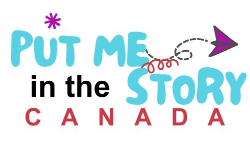
Enriching Vocabulary Through Spring Themes
Share

Springtime is a lovely time for kids to grow their vocabulary. Books about spring include many words linked to nature, weather, colours, and growth. Using these words can help kids get better at speaking and make their descriptions richer.
The gentle sound of rain and the bright rainbow colours of flowers appear on every page. Each page helps kids learn new words. When children use these words in their daily talks and actions, they practice what they have learned. They start to enjoy using language.
How nature-based stories enhance language skills
Stories about nature can help young children get better at their language skills. Emergent readers gain from:
- Vocabulary Development: Learning words like "blossom," "hibernate," and "metamorphosis" helps kids understand the natural world better.
- Descriptive Language: Bright pictures of spring make children use their senses. They can find fun ways to describe what they see.
- Understanding of Concepts: Nature stories help explain ideas like life cycles and weather in a simple way.

When we share stories about the beauty of nature, we help improve literacy skills. This also helps children see how wonderful the world is around them.
The role of repetition in early reading development
Repetition is important for young readers to develop their literacy skills. Books that repeat phrases are great for them. When children read the same words and sentences many times, they:
- Develop Sight Word Recognition: When young readers practice sight words regularly, they can spot them quickly while they read.
- Improve Fluency and Comprehension: Reading the same story several times helps children read more easily and understand it better.
- Build Confidence: When young readers encounter the same phrases again, it boosts their confidence in their reading abilities.
Engaging Reading Activities for Springtime
Make storytime more fun by including activities that celebrate spring! You can add crafts, songs, and outdoor play. This will create a full experience that matches the springtime stories you read.
Transform your reading space into a lively meadow or a busy beehive. This change can inspire creativity and make learning feel real, instead of just being a book read. These activities link stories to everyday life. They make reading enjoyable and enhance understanding.
Interactive read-aloud sessions with spring books
Make storytime fun and exciting by having read-aloud sessions with great spring books. You can get kids involved by:
- Asking questions: Help kids talk about their ideas, what they see, and what they feel while you read the story.
- Using different voices: Make the characters more fun. Use silly voices and lively sounds to grab the attention of young listeners.
- Incorporating props: Use puppets, toys, or items from nature like flowers and leaves. This can create a fun learning experience.

Crafting bookmarks inspired by spring characters
Get young readers excited and spark their creativity by:
- Making Colourful Bookmarks: Enjoy making bookmarks with fun spring characters or bright patterns.
- Using Different Materials: Offer many craft supplies, like construction paper, crayons, markers, glitter, and stickers.
- Encouraging Personal Touch: Allow children to add their own style to make their springtime bookmarks unique.
These crafts help kids remember the springtime stories they read. They also make reading time more fun.
A walk in nature with an outdoor spelling bee
Take a walk in nature. A fun outdoor spelling bee is ready for young learners. They can enjoy the nice scenery as they practice spelling words about the lively spring. This activity is fun and helps with literacy skills. It brings together the joy of being outside with important learning. You will see the excitement in their eyes as they feel the magic of spelling among colourful flowers and singing birds. Let the natural world be their classroom. This special outdoor experience will help them love reading even more.
Conclusion
Spring stories for young minds are a fun way to support reading skills and inspire storytelling. Enjoy wonderful tales like "The Curious Caterpillar" and "Raindrop Tales." These stories let kids discover the beauty of nature and learn new words. You can join in with fun reading activities and even create bookmarks based on spring characters. This makes learning more enjoyable. These books are great for kids of all ages, helping them to love reading even more. It's important to choose books that match kids’ interests to help them grow their love for stories. Let your child feel the magic of spring with these tales, and you will notice their reading skills getting better.
Frequently Asked Questions
What age group benefits most from these spring stories?
Spring stories are great for young children and emergent readers who are ages 2 to 6. These stories often include themes about the first spring. They help kids improve their literacy skills while having fun and enjoying the stories.
How can spring-themed books engage young readers and promote literacy development?
Spring-themed books catch the eye of young readers. They combine the beauty of nature with fun stories. This encourages a love for reading and learning. With colourful pictures and relatable characters, these stories spark imagination. They also help improve vocabulary and build strong literacy skills.
How do personalized books foster a love for reading?
Personalized books that have a child's name and a character that looks like them help the child feel tied to the story. When a child feels connected, they see themselves as a part of the tale. This bond encourages a love of reading.
What are some recommended spring-themed books that are known to have a positive impact on developing reading skills in young children?
Spring-themed books, like "The Adventure of the Blossom Bunnies" and "Little Duckling’s First Spring," wow young readers. They make reading enjoyable with fun stories about nature and growth. These stories help kids improve their literacy skills and get curious about the world.
